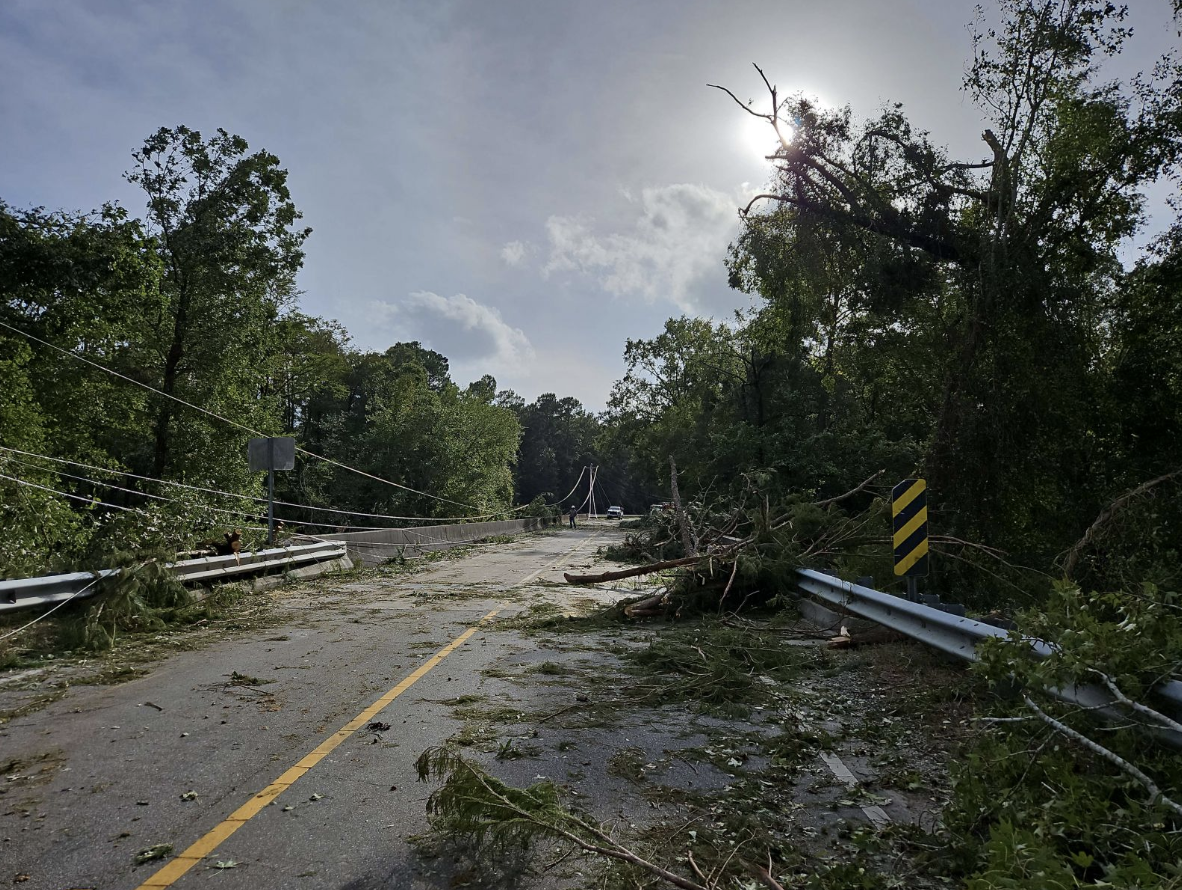Severe rain and wind gusts from Hurricane Helene swept across the state beginning the evening of Sept. 27, causing infrastructural damage and displacing locals.
The Category 4 hurricane landed along the Florida coast late Sept. 26, 2024. Moving north, the storm brought torrential winds and widespread rainfall across Georgia and the western Carolinas. A majority of the damage in North Carolina started on Sept. 27, and continues as both state and federal governments deploy relief supplies and services.
The eastern half of the state experienced considerably less severe precipitation and wind gust levels, although school closures still occurred in districts like Wake, Chatham and Orange County. Some schools continued closures through Monday and Tuesday.
According to the National Weather Service (NWS), wind gusts reached up to 60 mph and rainfall reached 4.26 inches. Several tornadoes across the southeastern region of the state were reported, including in Bladen County.
Governor warns of hurricane damage
State preparation for the storm began on Sept. 26, when Governor Roy Cooper warned of the dangers that Helene could bring in a press release. “Helene is an unusually dangerous storm that threatens to bring heavy rain and potentially catastrophic flooding tonight and tomorrow for Central and particularly Western North Carolina,” he said. The governor announced a state of emergency on Wednesday, just a day earlier.
“Make a plan now to stay with friends or family if you are in an area that could likely be flooded and stay informed to protect yourselves and your family.”
Storms cause road closures, power outages
Once the storm entered the state on Friday, the governor urged residents who were not evacuating under official orders to shelter in place. Over 359 roads were closed, as the North Carolina Department of Transportation worked to repair and respond to the damage.
Further, extensive power outages and flash flooding affected large regions in western North Carolina. The state estimated that over 700,000 residents lost power on Saturday, Sept. 28. This number peaked at around one million by Sunday.
“For western North Carolina, do not travel unless there is an emergency,” said Governor Cooper. “[P]eople in western North Carolina should consider all roads closed unless you are seeking higher ground. I urge people to stay informed and listen to local emergency response officials.”
Emergency rescue and response deployed
The responders conducted over 200 reported rescues and the state established 18 emergency shelters – from Buncome to Yancey County – for refugees, housing over 1,000 North Carolinians.
Through the weekend, the state continued its rescue efforts, including sending supplies by plane. By Saturday, the state reported 11 landslides and 418 state roads closed.
“The State Emergency Response Team is working around the clock responding to severe impacts from Helene’s devastation. We are grateful for our local, state and federal partners and their teamwork to help North Carolinians hit hard by this storm,” said state Emergency Management Director Will Ray in a press release. “Please remain aware of hazards and follow directions from local officials to protect life and safety.”
Federal agencies send support and relief aid
On Sept. 28, President Joe Biden approved Major Disaster Declarations for the state, sending relief funds for hurricane recovery. Citizens of 25 counties and the Eastern Band of Cherokee Indians were made eligible for Federal Emergency Management Agency (FEMA) assistance.
Help came from various federal agencies, including the Environmental Protection Agency (EPA), which delivered on-the-ground maintenance for water infrastructure; the U.S. Department of Agriculture’s emergency extension credits for farmers whose crops and livestock were damaged; and the Army Corps of Engineers, who assisted in supplying temporary power and assessed structures like dams for risk of collapse.
Helene’s severity unprecedented in decades
The hurricane is the first of its category to hit the state since Hurricane Hazel in 1954. Hazel was considered the deadliest and most expensive storm, although official numbers on Helen’s economic and social impact have yet to be measured.
However, the state is no stranger to such storms. In 2018, Hurricane Florence plowed through the state, resulting in 30 inches of rain in certain areas and claiming 42 lives. Other notable storm events included Hurricane Matthew in 2016 and Hurricane Irene in 2011.
As of Sept. 30, flood warnings continue to be issued for the Asheville area and flood advisories across Burke County. The entire western half of the state is under a hazardous weather outlook.














































































